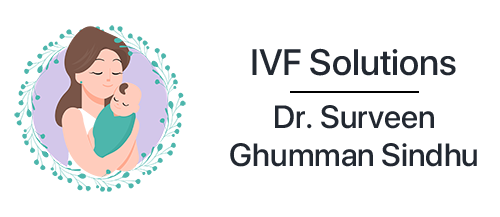Egg & Embryo Freezing
Procedures are available for cases where patients would like to freeze their eggs & embryos for future IVF cycles and other treatments.
Get Free Consultation
Explanation
We offer both embryo and egg freezing. We have a robust cryopreservation program in place where we freeze eggs and embryos by a method called vitrification at -170 degrees C in liquid nitrogen. These can be preserved for years.
Egg freezing is indicated in two conditions:
- Cancer fertility preservation (oncofertility). Most women who have to undergo cancer treatment in the form of chemotherapy and radiotherapy loose their egg reserve and reach menopause. In women who still have to complete their families, before start of chemotherapy we stimulate the ovaries and take out as many eggs as possible and freeze them for future fertility. However patient must be counselled about the success rate of IVF which is around 50%. Younger patients give better results.
- Women who dont have a partner and are above 30 years. They may preserve their eggs for future fertility keeping in mind the success rate. These women should be counselled to do more than one cycle as more the number of eggs higher the chances of pregnancy. Approximately one mature good quality egg has a chance of 15% for pregnancy
Did You Know?
If you freeze 10–20 eggs before you’re 35, that gives you a 70–90% chance of motherhood using those eggs later.
Embryo Freezing
Embryo Preservation
Embryo freezing is done for all excess embryos formed. After transferring 2-3 embryos, rest are frozen to be used at a later date. This also brings the cost of the next cycle down as no injections for stimulation or egg retrieval procedure is required. Embryos may be frozen if the lining of uterus is not of optimal thickness for implantation or a PGD biopsy is required. It is also done if a cancer patient has a partner Instead of eggs embryo is frozen.
Frozen Embryo Transfer Cycle
Frozen Embryo cycle is a much easier cycle for the patient as the woman does not need to take any injections for egg production. She only needs to take oral medicines to prepare the uterus. An ultrasound scan assesses the lining of the uterus, which, once ready, embryos are thawed and transferred into her womb. The chances of a successful pregnancy are similar to a fresh cycle.
Why Surveen Ghumman Sindhu?
Our Success Story
We had been trying to conceive for the past 4 years. We also tried ovulation induction & 4-5 IUI’s at reputed infertility clinics but all efforts went in vain. Then we met Dr Surveen. In the very first consultation with Dr Surveen we gained tremendous hope & confidence.
We had been trying to conceive for the past 4 years. We also tried ovulation induction & 4-5 IUI’s at reputed infertility clinics but all efforts went in vain. Then we met Dr Surveen. In the very first consultation with Dr Surveen we gained tremendous hope & confidence.
She had a rationale approach throughout my treatment. She carried out detailed pre-procedural work up like, hysteroscopies, lateral metroplasty, to ensure successful outcome. Her compassion & empathy towards us made our IVF journey much easier.
Even when the first IVF cycle failed she provided a positive outlook for us & we went ahead with a second IVF cycle. As a result of her dedicated efforts, I am now 9 weeks pregnant with twins & this is more than what we could have EVER hoped for.
Also, the nursing staff, lab team & admin staff were very kind & caring
Mr. Atul Deshwal & Dr. Pragati Gupta
One fine day I was lucky enough to have Dr Surveen as my treating doctor and I knew if she couldn’t do it then no one else in the world would be able to do it. With her constant monitoring and hard work on me made it possible for me to conceive.
One fine day I was lucky enough to have Dr Surveen as my treating doctor and I knew if she couldn’t do it then no one else in the world would be able to do it. With her constant monitoring and hard work on me made it possible for me to conceive.
She was so patient with me throughout the journey. I was very comfortable with her and she always answered my calls and messages, be it any time of the day. I am so grateful to Dr Surveen, she is the best IVF Doctor in India
Kanika
The words cannot express the gratitude we have in our hearts to Dr Surveen and her team who have helped us in the difficult journey towards achieving parenthood.
The words cannot express the gratitude we have in our hearts to Dr Surveen and her team who have helped us in the difficult journey towards achieving parenthood.
We gave birth to a beautiful baby girl, named ANAISHA. She made us feel comfortable during a time that was pretty scary for us. She is a great doctor. She made us feel comfortable and important!
Vinay & Shweta
Some Priceless Happiness
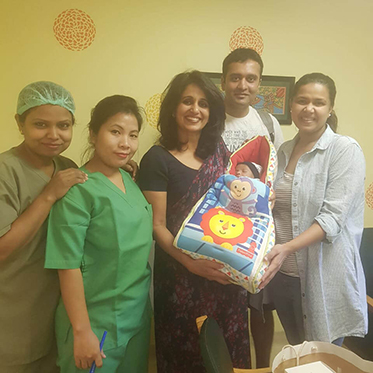
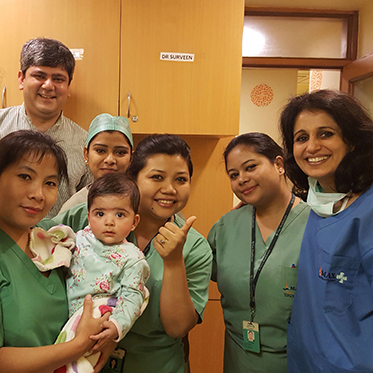
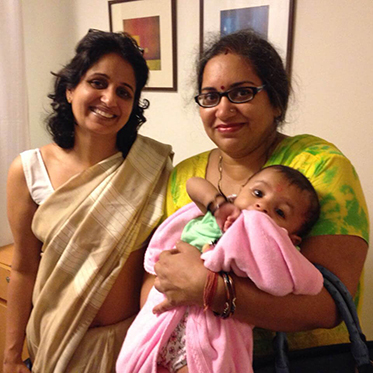
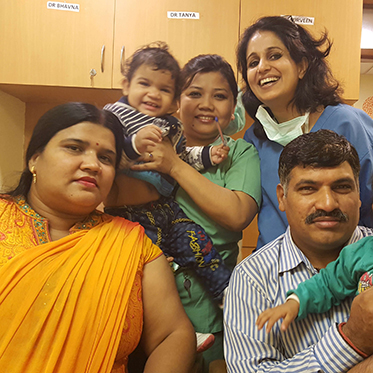

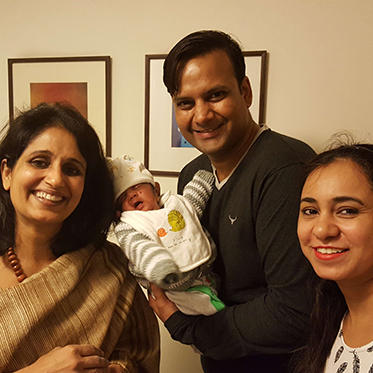
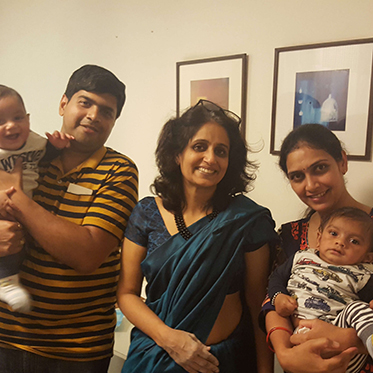
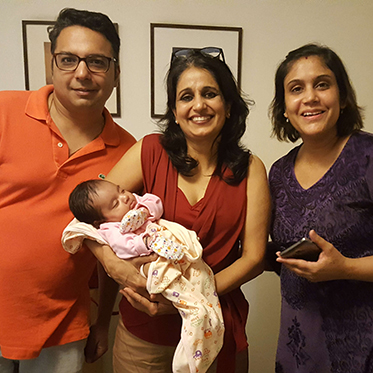
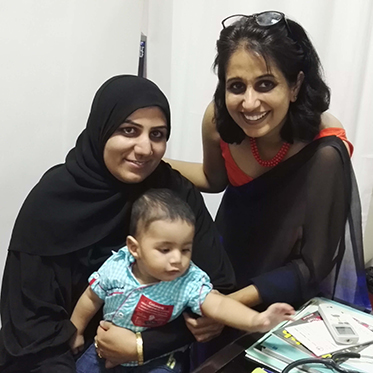
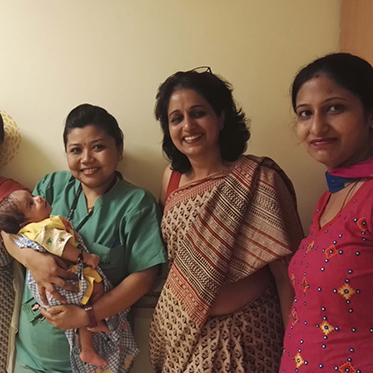

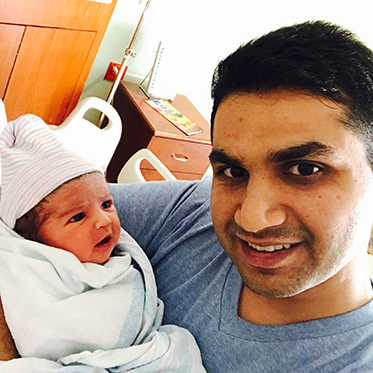

Knowledge Center
Frequently Asked Questions
Cryopreservation in simple language means freezing of the embryos. Eggs are fertilized in the IVF lab with sperm; embryos develop which are then transferred into the uterus. Successful implantation of the embryo following this fertilization process in the IVF lab is an extremely important variable affecting IVF success rates. Optimal success rates usually require an average transfer of two or three embryos
- Patients who did not achieve successful pregnancies in that particular cycle in IV may use these stored cryopreserved embryos in the next cycle.
- Patients having successful pregnancies from their “fresh” IVF can use their frozen embryos for a second child after a few years.
- Embryo cryopreservation in IVF also allows patients and physicians the possible option of reducing multiple births by controlling the number of embryos transferred and, at the same time, maximizes the efficiency of the fresh cycle they have already gone through.
- In patients with a risk of severe ovarian hyperstimulation (a rare but serious complication of IVF) when a transfer of “fresh” embryos in that cycle would put the patient at high risk, all of the embryos are frozen and later warmed and transferred to the patient at a later time.
Both are methods of fertility preservation that allow patients to use their healthy, young reproductive materials later on in life. During egg freezing, unfertilized eggs are frozen for use later. In embryo freezing, the eggs are fertilized to create embryos before they’re frozen.
Yes, Women with low AMH levels are still candidates for egg freezing, but they may need multiple egg freezing cycles to reach their goal.
No, not generally. It lasts approximately 15 to 20 minutes, and general anaesthesia is given. Some patients have mild cramping after the procedure and are discharged with a prescription for pain medication.

